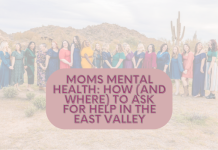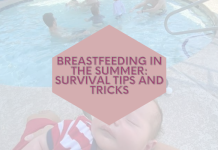Breasts. Boobs. Boobies. Bumps. Rack. Jugs. Knockers. Melons. Whatever you call them, we all have them. They come in all sizes. Some are big and some are small. Some are real and well, some aren’t so real. Some are perky and some hang so low, no push up bra is going to put those puppies back in place. No matter how big or small, real or fake, we all have one thing in common. We need to check our bumps for lumps….and I mean regularly. Like every month!
It is estimated that in the U.S. in 2013 alone that there will be 232,340 new cases of invasive breast cancer, 64,640 new cases of in situ breast cancer and 39,620 breast cancer deaths.
Early detection and screening is key. So get ready ladies-let’s learn about how to properly do a breast-self exam. Refer to the diagram below on the proper way (yes there is a technique to it) to do a breast-self exam.
Using the pads of your fingers, move around your entire breast in a circular pattern moving from the outside to the center, checking the entire breast and armpit area. Check both breasts each month feeling for any lump, thickening, or hardened knot. Notice any changes and get lumps evaluated by your healthcare provider.
2) IN FRONT OF A MIRROR
Visually inspect your breasts with your arms at your sides. Next, raise your arms high overhead.
Look for any changes in the contour, any swelling, or dimpling of the skin, or changes in the nipples. Next, rest your palms on your hips and press firmly to flex your chest muscles. Left and right breasts will not exactly match—few women’s breasts do, so look for any dimpling, puckering, or changes, particularly on one side.
3) LYING DOWN
When lying down, the breast tissue spreads out evenly along the chest wall. Place a pillow under your right shoulder and your right arm behind your head. Using your left hand, move the pads of your fingers around your right breast gently in small circular motions covering the entire breast area and armpit.
Use light, medium, and firm pressure. Squeeze the nipple; check for discharge and lumps. Repeat these steps for your left breast.
http://www.nationalbreastcancer.org/breast-self-exam
Remember, do this every month and follow the steps above so that way it will be easier to detect changes.
Ok, now that we know how to do our self exams, it’s time for the part that most women dread. The Mammogram. While I am first to admit that these aren’t the most fun way to spend an afternoon, they are quick (they take about 15 minutes) and any pain or discomfort that you might experience while getting your boob smashed and flattened like a pancake between two plastic plates is worth it in my opinion, if it could possibly save your life. Mammograms are key to detection because they are used to find even the smallest of lumps that you can’t detect by doing a breast-self exam. But remember, while mammograms are accurate, they are not perfect and sometimes things are missed. This is why a combination of self exam, mammography and your annual checkup with your OB or PCP is important as they will do a CBE (clinical breast exam) as well.
Talk to your doctor about getting a baseline mammogram scheduled. A baseline is different than a diagnostic mammogram. A baseline is done to determine what your breasts and tissue look like now. A diagnostic mammogram is done when you report a change-such as you find a lump or notice other changes. The doctors will use the diagnostic mammogram to compare to your baseline mammogram to see what has changed and to look at any lumps you have found or they found while doing an exam or diagnostic screening.
You will also want to check with your insurance provider to see if they cover a baseline mammogram and if so, at what age. It is recommended that women have their first mammogram by age 40.
My last bit of advice for you is to find a “breast buddy.” This person can be your mom, your sister, your aunt, your best friend-whomever you choose. You and your buddy will be responsible for reminding each other every month to do your self-exams. Pick the same day or date every month, like the 12th of each month or the first Tuesday. Whatever you do, just make sure you are consistent and hold each other accountable.
If you have any questions about breast health, consult your doctor. Now go and check those bumps for lumps!












Great post, Christina! Very important stuff. I remember demonstrating the exam (clothed) to my 15-year-old stepdaughter (whose mother had died of breast cancer). I remember the squirming look of horror well. But I betcha it stuck in her head. 😉